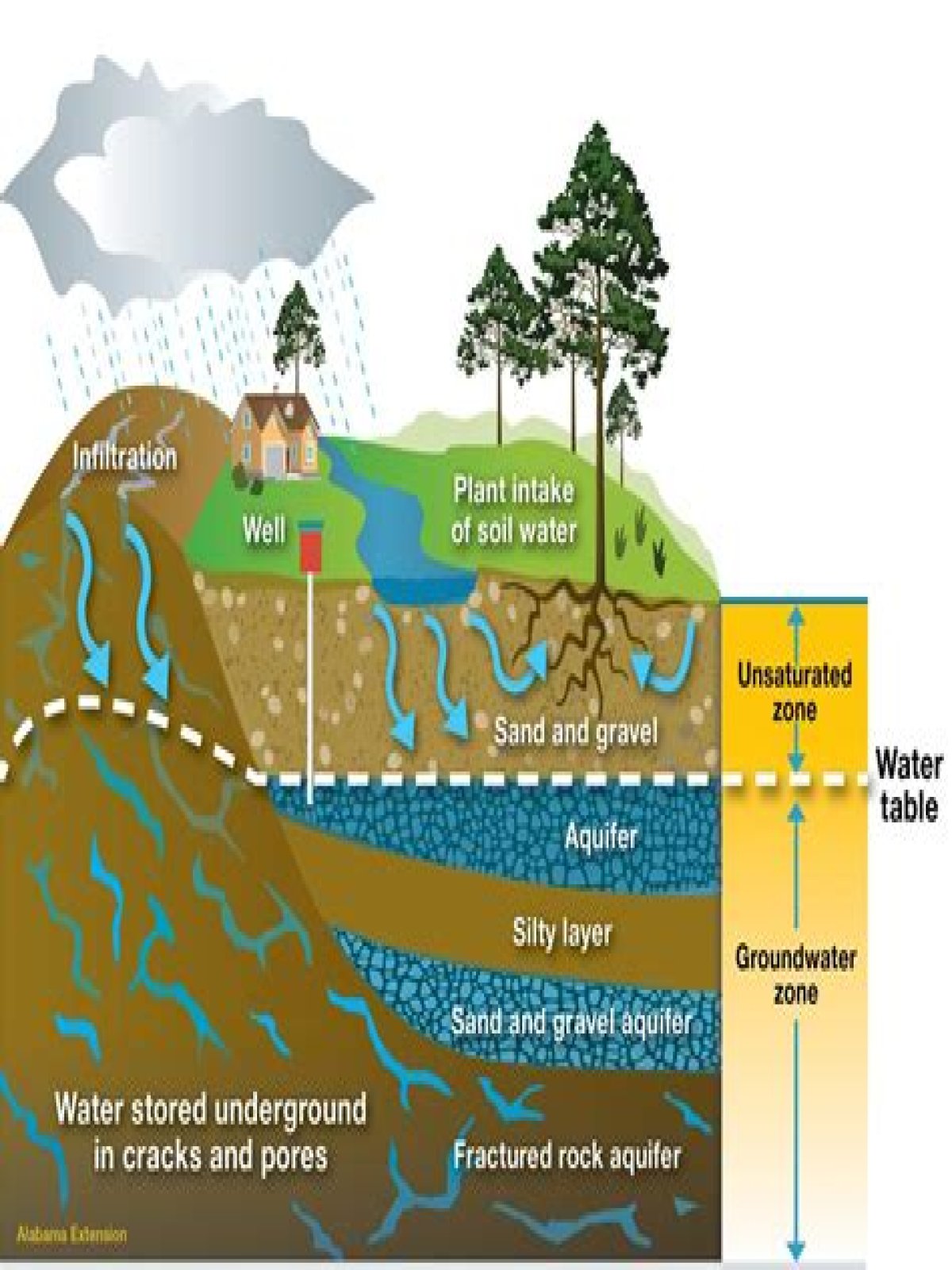Besides, how does an aquifer clean water?
The water that reaches these chambers is usually much cleaner than the water of reservoirs at the earth's surface. Almost no bacteria live in aquifers. Many pollutants are filtered out as the water passes through the soil on its way to the aquifer. Further precipitation adds water into the porous rock of the aquifer.
Likewise, how much water is in an aquifer? The groundwater contained in aquifers is one of the most important sources of water on Earth: About 30 percent of our liquid freshwater is groundwater, according to the National Oceanic and Atmospheric Administration (NOAA). The rest is found at the surface in streams, lakes, rivers and wetlands.
Also know, how does water get into the ground?
When rain falls to the ground, the water does not stop moving. Some of it flows along the land surface to streams or lakes, some is used by plants, some evaporates and returns to the atmosphere, and some seeps into the ground. Water not used by plants moves deeper into the ground.
Where is the water table located?
Answer and Explanation: The water table is under ground where there is an impermeable layer of rock or soil. When precipitation falls to the Earth, it seeps into the ground.
